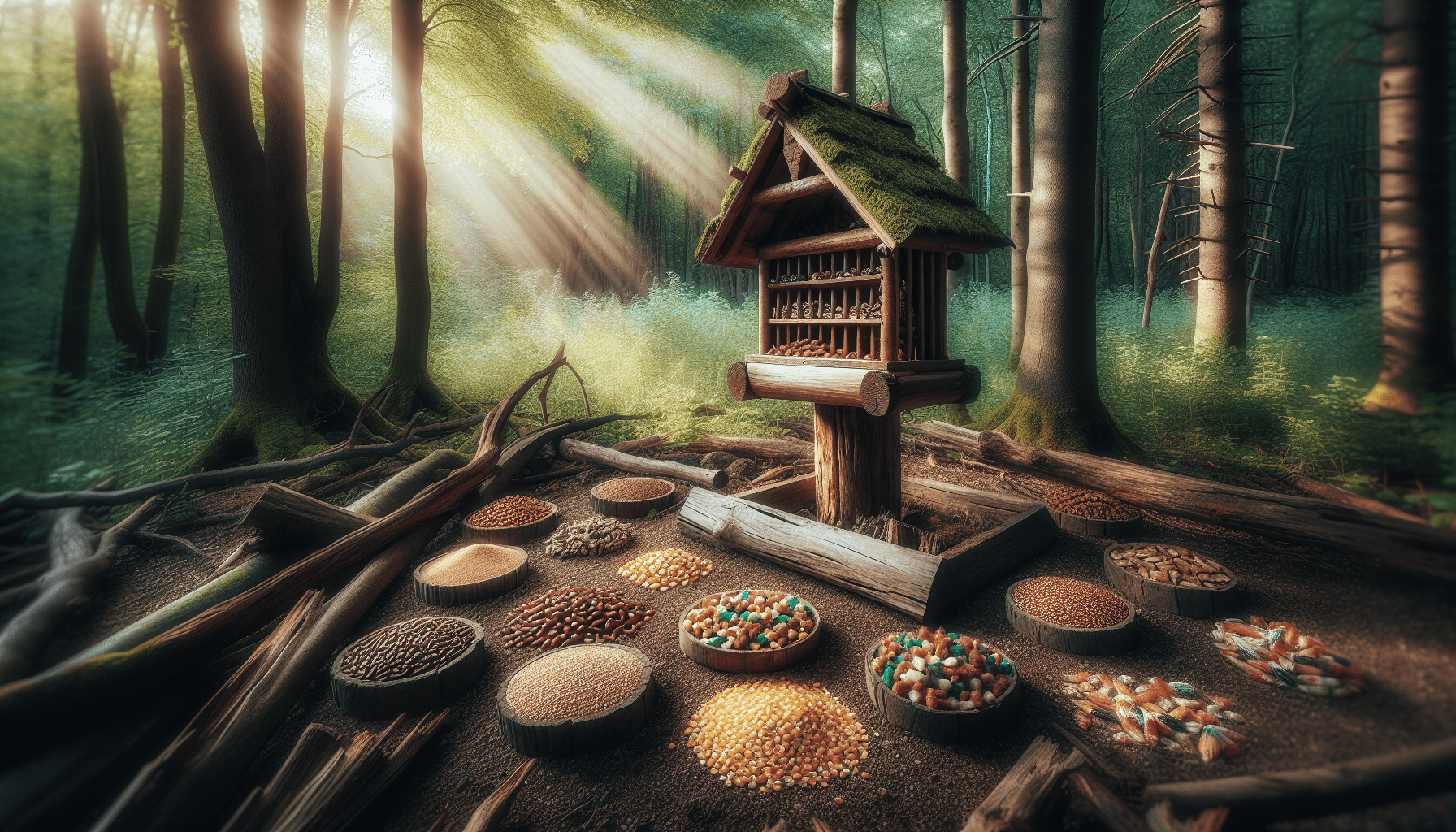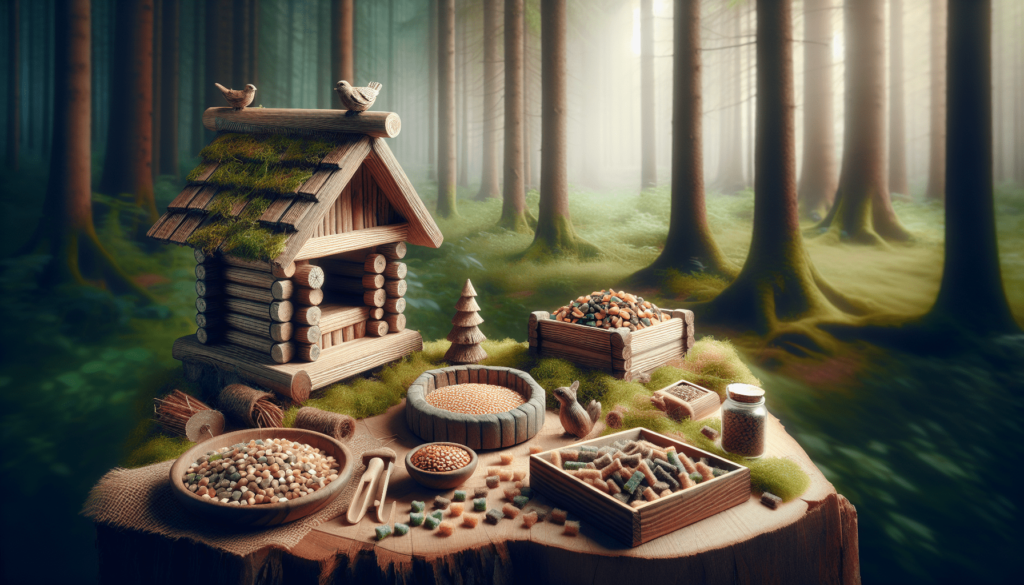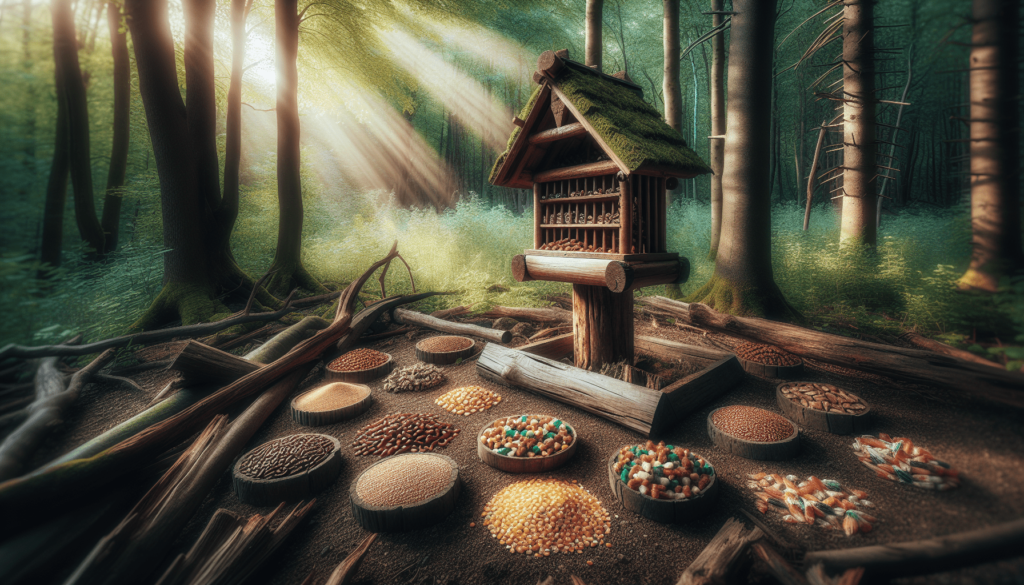
Have you ever stood in the woods, watching deer graze peacefully in a meadow, and wondered what benefit different types of feed could provide them? Understanding deer feed types not only helps you take better care of wildlife but it also informs you about how best to attract and maintain a healthy deer population in your surroundings. Let’s walk through the benefits and drawbacks of various deer feed types.
The Importance of Proper Deer Nutrition
Before we get into specifics, it’s essential to comprehend why deer nutrition matters. Just like any animal, deer require a balanced diet to thrive. Proper nutrition can influence their health, growth, reproduction, and resistance to disease. If you’re a wildlife enthusiast or a landowner aiming for a robust deer population, knowing the difference in available feeds is your first step.
Nutritional Needs of Deer
Deer are ruminants, which means they have a specialized digestive system. They rely on fibrous plant material and, when necessary, high-quality supplemental feeds. Key nutrients include carbohydrates, proteins, vitamins, and minerals.
Here’s a brief overview of what deer typically need:
| Nutrient | Importance | Source |
|---|---|---|
| Carbohydrates | Energy for daily activities | Grasses, browse |
| Proteins | Tissue development and repair | Legumes, grain mixes |
| Vitamins | Immune system support | Fresh vegetation |
| Minerals | Bone health and reproduction | Mineral blocks, natural sources |
By offering the right combinations of these nutrients, you can help ensure the well-being of your deer communities.
Types of Deer Feed
Understanding different types of deer feed options is critical for making informed decisions.
Natural Forage
Natural forage consists of the native plants found in the deer’s habitat. These include grasses, bushes, and trees. In general, they are lower in protein during dry months, prompting a need for supplements.
Benefits
- Free and readily available.
- Provides variety and is part of their natural diet.
- Helps maintain local ecosystems.
Drawbacks
- Nutritional value can fluctuate based on season and weather.
- May not provide adequate sustenance during winter months.
Grain Feeds
Grain feeds are rich in carbohydrates and proteins, often comprising corn, oats, and soy. They can be commercially produced or made at home.
Benefits
- Energy-dense and can improve growth rates.
- Useful for attracting deer during hunting season.
Drawbacks
- Over-reliance on grains can lead to digestive problems.
- Not a comprehensive solution for long-term nutritional needs.
Pelleted Feeds
Pelleted feeds are nutritionally balanced products that include grains, proteins, and additional vitamins and minerals. They are designed to meet specific dietary needs.
Benefits
- Easily digestible, offering a balanced diet.
- Convenient and clean for feeding.
Drawbacks
- Can be more expensive than natural feeds.
- Requires proper storage to avoid spoilage and pest issues.
Supplemental Minerals
Minerals play a crucial role in deer health, affecting everything from antler growth to reproductive success. Supplemental mineral blocks are widely used.
Benefits
- Supports bone strength and overall health.
- Encourages deer to congregate at specific sites for easier monitoring and management.
Drawbacks
- Deer may over-consume if not monitored properly.
- Transport and placement might be challenging in remote areas.
Attractants and Flavor Enhancers
These products often include grains mixed with sweeteners or additives to make them more appealing to deer. They can help draw deer into specific areas.
Benefits
- Can quickly attract deer for hunting or wildlife watching.
- Usually high in sugar, appealing to deer in late summer to pre-rut seasons.
Drawbacks
- Nutritional value is often low.
- Over-reliance can deter natural foraging patterns.

Considerations When Selecting Deer Feed
When choosing the right feed for deer, you’ll want to be thoughtful about a variety of factors beyond just ingredients.
Local Ecosystems
Different regions have their unique ecosystems. What works in one area may not work in another. It’s essential to recognize the local vegetation and climate.
Impact on Food Sources
Native vegetation is not only free but plays a critical part in maintaining environmental balance. Introducing non-native feeds can disrupt local habitats.
Seasonal Needs
Deer have varying nutritional requirements depending on the season.
| Season | Nutritional Focus | Feeding Strategy |
|---|---|---|
| Spring | Growth | Increase protein intake |
| Summer | Lactation and Growth | Sustain forage quality |
| Fall | Body Weight Gain | Start supplemental feeding |
| Winter | Maintenance | Provide consistent feeding |
You can tailor your feeding strategies to suit the specific season to support the deer effectively.
Cost Considerations
Feeding deer can become expensive, particularly with commercially produced feeds.
Price Ranking
Here’s a rough guide to help you understand costs associated with different feeding options:
| Feed Type | Estimated Cost (per bag) |
|---|---|
| Natural Forage | Free if available |
| Grain Feeds | $10 – $30 |
| Pelleted Feeds | $25 – $50 |
| Mineral Blocks | $15 – $30 |
| Attractants | $20 – $40 |
Knowing these costs can help you budget accordingly.
Long-term Strategies for Deer Feeding
Beyond just filling a feeder, you should consider more sustainable long-term strategies.
Habitat Improvements
Investing in habitat improvements ensures that deer have a natural food source year-round. Implement practices such as:
- Planting native crops: Consider planting clover or chicory, which can provide excellent forage.
- Creating diverse landscapes: A mix of open areas and dense cover can encourage natural foraging behaviors.
Monitoring Deer Health
Regularly observing deer can help you assess whether your feeding strategy is effective.
Signs of Healthy Deer
- Active behavior and a good presence of fawns in spring indicate a thriving population.
- Healthy coat condition, showing a glossy appearance.
Adjusting Feeding Strategies
Evaluate how well the selected feed choices work. Be prepared to adjust based on deer activity, seasonal changes, or nutritional deficits.

Ethical Considerations
When feeding deer, you should also be aware of the ethical considerations involved.
Feeding Regulations
Many regions have specific regulations regarding deer feeding, especially during hunting seasons. It’s vital to understand local laws to avoid unintentionally breaking regulations.
Best Practices for Feeding
To ensure your feeding efforts are ethical and effective, consider:
- Avoid over-feeding: Excessive feeding can lead to dependency or even overcrowding at feeding sites.
- Clean feeding areas regularly: Reduce the risk of spreading disease by maintaining clean feeding areas.
Conclusion
You have the chance to positively influence the health and vitality of local deer populations through mindful feeding practices. Each type of feed has its advantages and drawbacks, so taking the time to understand your options is important. Whether you lean toward natural forages or pelleted feeds, understanding deer nutrition makes for a more fulfilling experience in the great outdoors.
So, start observing, monitoring, and adapting your deer feeding strategies to create an environment where these beautiful creatures can thrive. In doing so, you’re not just providing sustenance; you’re fostering a vibrant, sustainable ecosystem.





